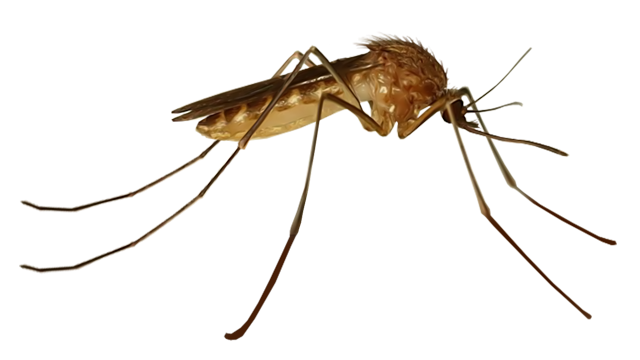Common House Mosquito

We’ve all been there, standing outside on a warm summer evening enjoying the last bits of sunlight of a friend’s barbeque or gearing up for a bonfire when you feel a sharp sting on your arm. You look down and see it, a small mosquito sticking its sinister little proboscis into your skin. Without thinking twice you reach out your other hand and squash the mosquito flat.
Even if you’re the type who relocates spiders out to the garden or catches mice live to move outside, you don’t think about squishing that little bugger mid-bloodsuck. Why is it that even when we feel sympathy for other pests, we retain such vicious loathing for mosquitoes? It could be because their attacks are much more personal, not just invading our space or tampering with the safety of our food, but sucking the very blood from our bodies. Adding insult to injury, not only do they leave behind itchy bumps that drive us insane, but they risk spreading horrible and potentially deadly diseases.
Mosquitoes are host to countless diseases, from malaria to West Nile virus and even to dog heartworm. As of late, the Zika virus has gained considerable notoriety as it slowly becomes more prevalent and has been shown to cause serious birth defects when it infects pregnant women.
Below is a profile of the common house mosquito and ways to prevent this pest from infesting your property.
| Identification |
|
| Behavior |
|
| Habitat |
|
| Life Cycle (Gradual or Incomplete Metamorphosis) |
|
| Seasonality |
|
| Favorable Conditions |
|
| Health |
|
| Concerns |
|
| Signs of an infestation |
|
What You Can Do To Prevent Mosquitoes On Your Property
- Inspect your property for standing water
- Outdoor inspection - Puddles, swimming/wading pools, tires, poorly irrigated landscape, bird baths, junk piles, roof gutters, storm drains, outdoor furniture, abandoned cars
- Indoor Inspection - flower vase, plant saucers, pottery, water bottles, shower/sink drains, buckets, pet water dishes, dishwashers, undisturbed toilets
- Dump standing water weekly or every few days - If the water cannot be removed be sure to keep the water circulating and/or treated
- Cut your lawn regularly and keep weeds away
- Remove any clutter or trash on your property
- Don’t overwater your lawn or plants
- Inspect all windows and doors to make sure screens are in good condition - Add screens if there aren’t any already
- Seal all gaps around the home that could give mosquitoes access